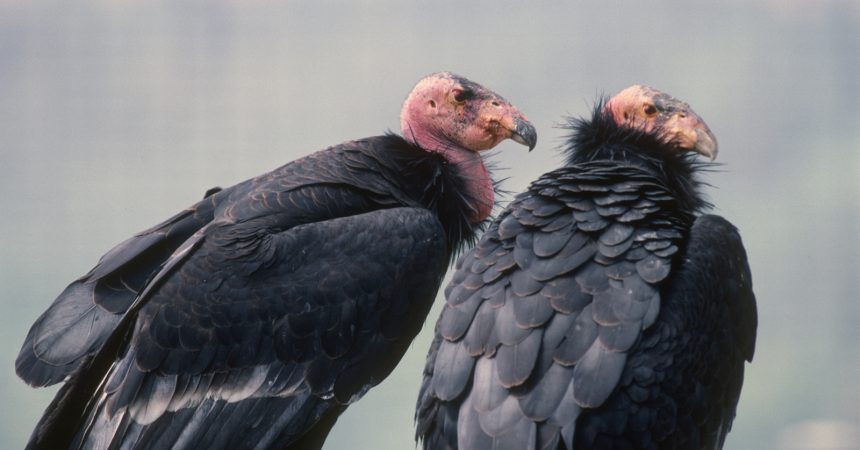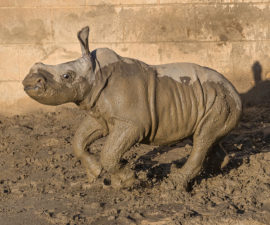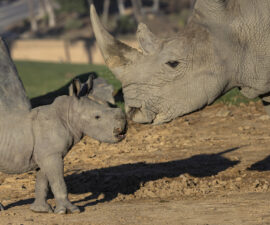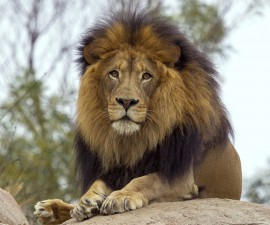If you’ve checked on Condor Cam recently, you’ve no doubt noticed it is now focused on the socialization yard. Here’s what’s happening, and what to watch for.
This is the time of year when our California condor chicks are fledging, or leaving the nest. We let them stay in the flight pens with their parents for a while, but eventually we move them to our remote socialization pen, approximately one mile from the main part of the Safari Park. There, they socialize with other fledglings their age while being isolated from any human activity. In the wild, condor chicks stay with or around their parents for up to 18 months. We don’t let them stay that long here at the Park. If we did, the next breeding season would probably be compromised; the presence of the fledgling may prevent the parents from breeding the next year, or the parents may turn aggressive to the chick if they try to nest again.
California condors that are expected to be released to the wild are called “release candidates.” We raise all of our condor chicks as if they are release candidates until we hear otherwise from the U.S. Fish & Wildlife Service, which oversees the California Condor Recovery Program. Release candidates are isolated from humans. We offer their food through a chute in the wall and we don’t pick up any of their old food. The pools are drained and rinsed from the outside of the pen. The only time the birds see us is during necessary procedures: affixing wing tags, pre-shipment examinations, or West Nile Virus inoculations. These generally are not enjoyable experiences for the young condors—and that is fine. We don’t want them to associate humans with anything beneficial. Rather, we hope to foster behaviors that wild condors would have, such as avoiding human activity and hazardous, artificial situations. Survival rates for condors that become accustomed to humans and human activity are very low.
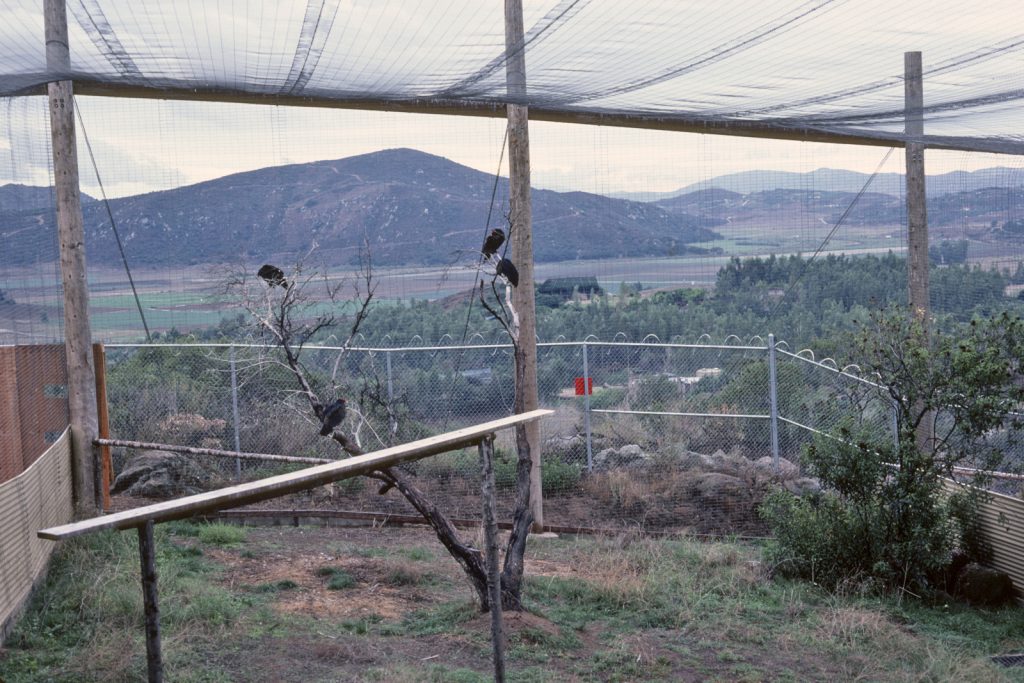
The Condor Breeding Facility at the San Diego Zoo Safari Park has a number of large aviaries that allow the California condors to fly, roost, and socialize naturally. The birds in this image are not in the socialization yard, but a different one.
Our oldest condor chick moved up to the socialization pen on August 25. Her name is Swayin (pronounced “SWAH-yeen”), which means “winter” in the Chumash language. Swayin hatched on February 10 from the earliest egg to be laid on record. Hatching season usually begins at the beginning of March! You can identify Swayin by her white #9 wing tag on her right wing.
Swayin is now living with two older birds that frequent Condor Cam viewers have already met. The first is 1.5-year-old juvenile Antiki (pronounced “an-TEE-kee”), who was raised on Condor Cam in 2015. Geneticists for the California Condor Recovery Program determined that Antiki would be more valuable in the zoo breeding population than as a release candidate, so she will stay at the Safari Park for now. Antiki is wearing a white #77 wing tag on her right wing.
The other bird living with Swayin is a 12-year-old adult female named Xananan (pronounced “ha-NA-nan”), she’s the only bird in the pen with a pink head and she wears a blue #21 wing tag on her left wing. Xananan is a “mentor” for the young birds, facilitating the socialization of the fledglings. Condors are very social and, like us, need to learn the rules of how to interact in a group. The parent condors start this process when the chicks hatch, and continue as the youngsters eventually fledge. Now that they are no longer living with their parents, Xananan will further their “education.” She will be the dominant bird in the pen, often displacing the fledglings from perches or roost sites or pushing them from the food until she has eaten first. The dominant birds at a site are usually the biggest ones, and often the most experienced. The young condors need to learn how to interact with these dominant and pushy birds in order to be successful in the wild.
The socialization pen is very large with lots of space to fly around and exercise wings. There are several large oak snags on which to perch or roost. Also, there are two pools from which to drink or bathe. There are several ground level perches and boulders on which to hop around, as well. It is interesting to see the social development of each bird. They can choose to perch next to whichever bird they wish, so they really get to know each other well. We have learned that young condors that aren’t well-socialized tend not to be successful once they are released to the wild.
As our other four condor chicks are moved to the socialization pen later in the year, we will keep you updated. Have fun watching Condor Cam!
Ron Webb is a senior keeper at the San Diego Zoo Safari Park. Read his previous blog, Vultures Face Many Threats—but You Can help Them Survive.

